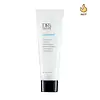What's inside
What's inside
 Key Ingredients
Key Ingredients

 Benefits
Benefits

 Concerns
Concerns

 Ingredients Side-by-side
Ingredients Side-by-side

Water
Skin ConditioningTea-Lauryl Sulfate
CleansingAcrylates/Steareth-20 Methacrylate Copolymer
Cocamide DEA
EmulsifyingCocamidopropyl Betaine
CleansingButylene Glycol
HumectantPolysorbate 20
EmulsifyingMethyl Gluceth-20
HumectantPanthenol
Skin ConditioningAloe Barbadensis Leaf Juice
Skin ConditioningSodium Hydroxide
BufferingGlycerin
HumectantMaltodextrin
AbsorbentTetrasodium EDTA
Simmondsia Chinensis Seed Oil
EmollientChamomilla Recutita Extract
Skin ConditioningHedera Helix Extract
AntimicrobialAscorbic Acid
AntioxidantParfum
MaskingPhenoxyethanol
PreservativeChlorphenesin
AntimicrobialCI 16035
Cosmetic ColorantWater, Tea-Lauryl Sulfate, Acrylates/Steareth-20 Methacrylate Copolymer, Cocamide DEA, Cocamidopropyl Betaine, Butylene Glycol, Polysorbate 20, Methyl Gluceth-20, Panthenol, Aloe Barbadensis Leaf Juice, Sodium Hydroxide, Glycerin, Maltodextrin, Tetrasodium EDTA, Simmondsia Chinensis Seed Oil, Chamomilla Recutita Extract, Hedera Helix Extract, Ascorbic Acid, Parfum, Phenoxyethanol, Chlorphenesin, CI 16035
Water
Skin ConditioningMyristic Acid
CleansingGlycerin
HumectantPotassium Hydroxide
BufferingCoco-Glucoside
CleansingStearic Acid
CleansingPalmitic Acid
EmollientGlycol Distearate
EmollientCocamidopropyl Betaine
CleansingGlyceryl Stearate
EmollientBeeswax
Emulsion StabilisingSorbitan Olivate
EmulsifyingPEG-100 Stearate
Phenoxyethanol
PreservativeSodium Chloride
MaskingHydroxyethylcellulose
Emulsion StabilisingEthylhexylglycerin
Skin ConditioningAllantoin
Skin ConditioningPanthenol
Skin ConditioningMelaleuca Alternifolia Leaf Oil
AntioxidantDisodium EDTA
Paeonia Lactiflora Root Extract
Skin ConditioningGlycyrrhiza Glabra Root Extract
BleachingPolygonum Multiflorum Root Extract
Skin ConditioningPhellinus Linteus Extract
Skin ConditioningMorus Alba Bark Extract
Skin ConditioningSophora Flavescens Root Extract
AntioxidantCimicifuga Racemosa Root Extract
AntimicrobialSesamum Indicum Seed Extract
Skin ConditioningAngelica Gigas Root Extract
Skin ConditioningScutellaria Baicalensis Root Extract
AstringentBetaine
HumectantSalicylic Acid
Masking1,2-Hexanediol
Skin ConditioningSodium Hyaluronate
HumectantWater, Myristic Acid, Glycerin, Potassium Hydroxide, Coco-Glucoside, Stearic Acid, Palmitic Acid, Glycol Distearate, Cocamidopropyl Betaine, Glyceryl Stearate, Beeswax, Sorbitan Olivate, PEG-100 Stearate, Phenoxyethanol, Sodium Chloride, Hydroxyethylcellulose, Ethylhexylglycerin, Allantoin, Panthenol, Melaleuca Alternifolia Leaf Oil, Disodium EDTA, Paeonia Lactiflora Root Extract, Glycyrrhiza Glabra Root Extract, Polygonum Multiflorum Root Extract, Phellinus Linteus Extract, Morus Alba Bark Extract, Sophora Flavescens Root Extract, Cimicifuga Racemosa Root Extract, Sesamum Indicum Seed Extract, Angelica Gigas Root Extract, Scutellaria Baicalensis Root Extract, Betaine, Salicylic Acid, 1,2-Hexanediol, Sodium Hyaluronate
 Reviews
Reviews

Ingredients Explained
These ingredients are found in both products.
Ingredients higher up in an ingredient list are typically present in a larger amount.
Cocamidopropyl Betaine is a fatty acid created by mixing similar compounds in coconut oil and dimethylaminopropylamine, a compound with two amino groups.
This ingredient is a surfactant and cleanser. It helps gather the dirt, pollutants, and other impurities in your skin to be washed away. It also helps thicken a product and make the texture more creamy.
Being created from coconut oil means Cocamidopropyl Betaine is hydrating for the skin.
While Cocamidopropyl Betaine was believed to be an allergen, a study from 2012 disproved this. It found two compounds in unpure Cocamidopropyl Betaine to be the irritants: aminoamide and 3-dimethylaminopropylamine. High-grade and pure Cocamidopropyl Betaine did not induce allergic reactions during this study.
Learn more about Cocamidopropyl BetaineGlycerin is already naturally found in your skin. It helps moisturize and protect your skin.
A study from 2016 found glycerin to be more effective as a humectant than AHAs and hyaluronic acid.
As a humectant, it helps the skin stay hydrated by pulling moisture to your skin. The low molecular weight of glycerin allows it to pull moisture into the deeper layers of your skin.
Hydrated skin improves your skin barrier; Your skin barrier helps protect against irritants and bacteria.
Glycerin has also been found to have antimicrobial and antiviral properties. Due to these properties, glycerin is often used in wound and burn treatments.
In cosmetics, glycerin is usually derived from plants such as soybean or palm. However, it can also be sourced from animals, such as tallow or animal fat.
This ingredient is organic, colorless, odorless, and non-toxic.
Glycerin is the name for this ingredient in American English. British English uses Glycerol/Glycerine.
Learn more about GlycerinPanthenol is a common ingredient that helps hydrate and soothe the skin. It is found naturally in our skin and hair.
There are two forms of panthenol: D and L.
D-panthenol is also known as dexpanthenol. Most cosmetics use dexpanthenol or a mixture of D and L-panthenol.
Panthenol is famous due to its ability to go deeper into the skin's layers. Using this ingredient has numerous pros (and no cons):
Like hyaluronic acid, panthenol is a humectant. Humectants are able to bind and hold large amounts of water to keep skin hydrated.
This ingredient works well for wound healing. It works by increasing tissue in the wound and helps close open wounds.
Once oxidized, panthenol converts to pantothenic acid. Panthothenic acid is found in all living cells.
This ingredient is also referred to as pro-vitamin B5.
Learn more about PanthenolPhenoxyethanol is a preservative that has germicide, antimicrobial, and aromatic properties. Studies show that phenoxyethanol can prevent microbial growth. By itself, it has a scent that is similar to that of a rose.
It's often used in formulations along with Caprylyl Glycol to preserve the shelf life of products.
Water. It's the most common cosmetic ingredient of all. You'll usually see it at the top of ingredient lists, meaning that it makes up the largest part of the product.
So why is it so popular? Water most often acts as a solvent - this means that it helps dissolve other ingredients into the formulation.
You'll also recognize water as that liquid we all need to stay alive. If you see this, drink a glass of water. Stay hydrated!
Learn more about Water